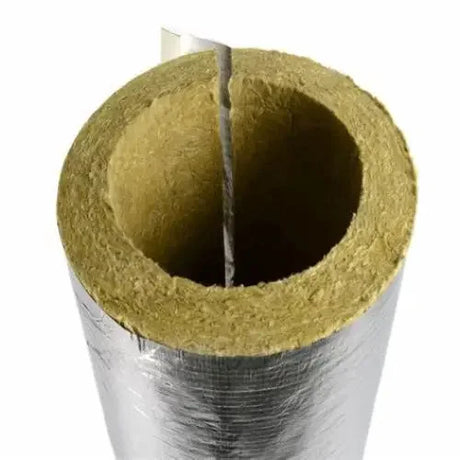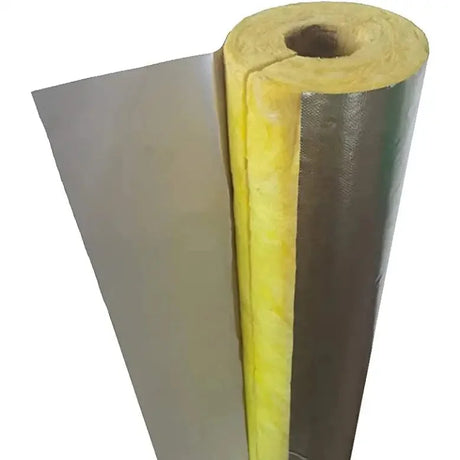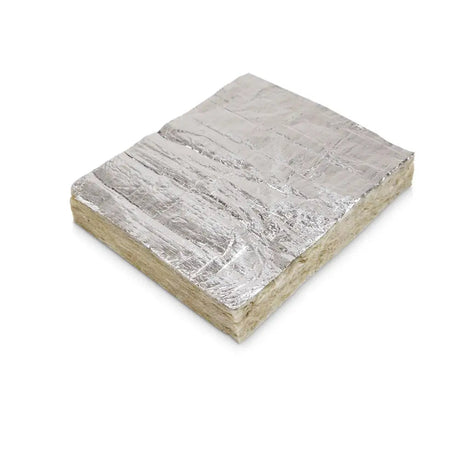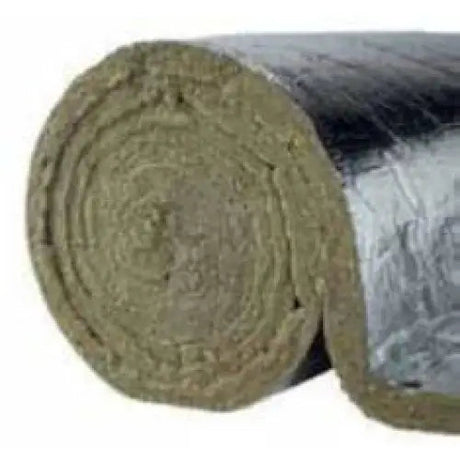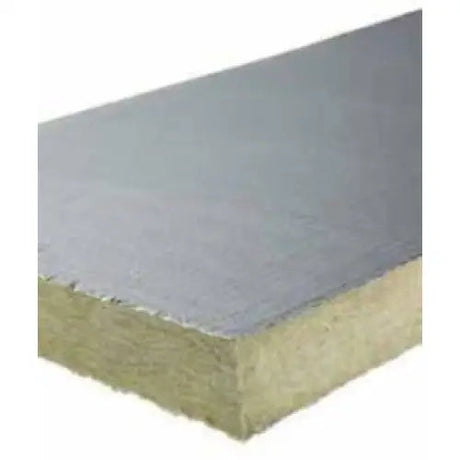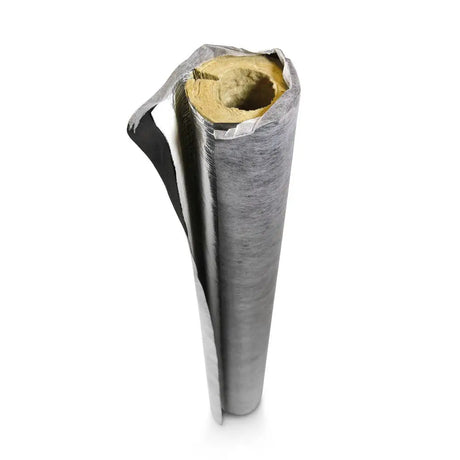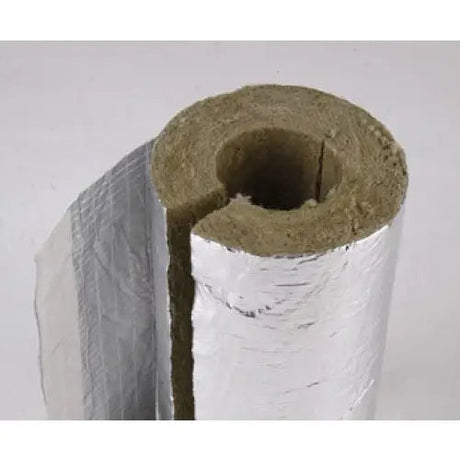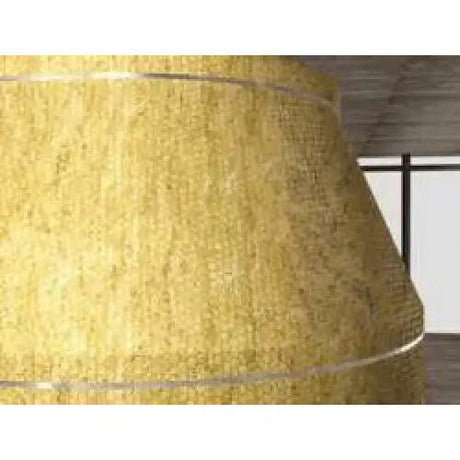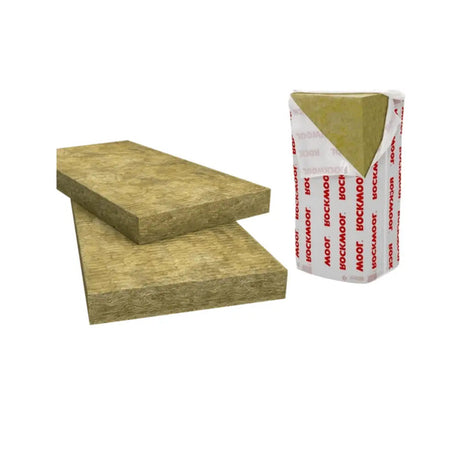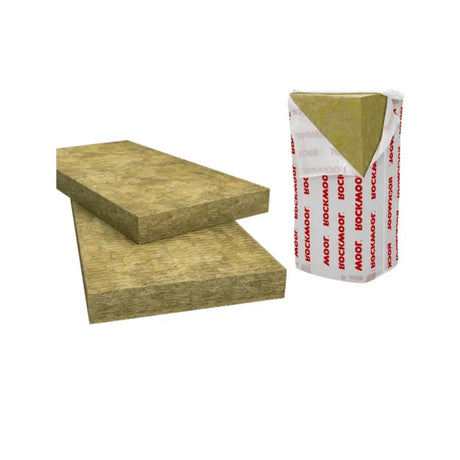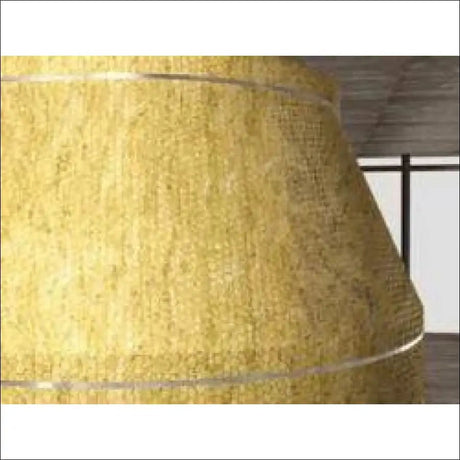Rockwool
Rockwool (Paroc) Foil Faced Pipe Insulation/Pipe Lagging (1m)
From £438Unit price /UnavailableRockwool
Rockwool (Paroc) Pipe Insulation in PIB Cladding
From £1334Unit price /UnavailableIn stockInsulation & More
Unbranded Mineral Wool Pipe Insulation/Lagging (Foil Covered)
From £504Unit price /Unavailable
A Complete Guide to Rockwool Insulation
Rockwool insulation has become a mainstay in construction projects across residential, commercial, and industrial sectors. With its unique properties and versatile applications, Rockwool delivers superior thermal and acoustic insulation for energy-efficient buildings. This comprehensive guide will explore everything you need to know about Rockwool insulation.
Overview of Rockwool Insulation
Rockwool insulation, also known as stone wool or mineral wool insulation, is manufactured from natural volcanic rock and recycled slag. The raw materials are melted and spun into fibers to create the unique, non-combustible insulation material.
The key properties that make Rockwool an ideal insulation solution include:
- Excellent thermal conductivity and R-value ratings for reducing heat transfer
- High density structure that resists heat flow
- Non-combustible nature with high melting point of 1000+ °C
- Excellent noise absorption and sound dampening capabilities
- Resistance to moisture with water-repellent properties
- Dimensional stability and durability over time
- Sustainable with high recycled content
With these characteristics, Rockwool delivers versatile insulation for walls, roofs, HVAC systems, pipes, and more. It is available in various forms including batts, rolls, loose-fill, and rigid boards.
Unique Manufacturing Process
Rockwool’s proprietary manufacturing process starts with locally sourced igneous rock and recycled slag from industrial waste streams. The materials are fed into a cupola furnace and melted at temperatures exceeding 1600°C into a molten mass.
High-pressure jets then spin the melted material at near sonic velocity into fine, intertwined fibers. A binder is injected into the fibers to provide shape and rigidity as they cool and cure.
The fibers form a dense, entangled structure with microscopic pockets of air, giving Rockwool its low thermal conductivity. They are then cut into the desired shapes and dimensions for different applications.
This innovative thermo-chemical and mechanical process transforms inert rock into a high-performance insulation material with inimitable properties.
Unparalleled Thermal Insulation
With thermal conductivity as low as 0.033 W/mK, Rockwool ranks among the most effective insulating materials available today. By slowing the transmission of heat, it retains indoor ambient temperatures and reduces energy consumption considerably.
In traditional frame constructions, Rockwool batt insulation placed between wall studs establishes a thermal barrier against heat flow. Similarly, it prevents heat gain when installed on exterior walls or as part of rainscreen systems.
Rockwool effectively insulates roofs and attics, lowering heat transfer through the ceilings. It maintains comfortable surface temperatures and minimizes thermal bridging.
For HVAC systems, Rockwool pipe and duct insulation reduces energy losses during heating/cooling distribution. With lower heat gain/loss, HVAC equipment can work more efficiently.
Acoustic Comfort and Noise Control
With its high-density structure, Rockwool absorbs sound vibrations instead of transmitting them. This 'noise sponge' effect significantly reduces sound transmission through walls and floors.
Rockwool insulation blocks exterior noise such as traffic or construction activities from intruding indoors. It also contains interior noise transmission between rooms, allowing privacy and quietness.
In commercial buildings, Rockwool provides excellent sound dampening and reverberation control. It is commonly used in auditoriums, theaters, studios and offices to enhance acoustic comfort.
Fire Resilience and Resistance
As a non-combustible stone wool fiber product, Rockwool provides crucial fire safety and resilience in buildings. It achieves Euroclass A1 fire rating, the highest level of fire classification.
Rockwool insulation does not feed flames or release smoke and toxic gases when exposed to high temperatures. Instead, it develops a char that slows heat transfer and fire spread. This provides precious time for building evacuation.
The melting point of Rockwool exceeds 1000°C, allowing it to retain insulating properties and structural integrity in fire incidents. It reinforces fire compartmentalization and safeguards critical structural components.
Moisture Management
Rockwool fibers contain water-repelling oils that prevent capillary absorption of moisture. Rain droplets or water vapor cannot penetrate the insulation or be held by capillary action.
In exterior wall assemblies, Rockwool resists wind-driven rain penetration. It maintains thermal and structural integrity even under damp conditions.
The water-repellent properties also prevent moisture accumulation and associated problems like mold, mildew and rotting. Rockwool contributes to a well-ventilated, low-moisture building envelope.
Dimensional Stability and Durability
Once installed, Rockwool retains its form and originally installed thickness over decades of service life. The rigid, intertwined fiber matrix is resistant to compression and settlement forces.
Rockwool does not suffer from thermal drift or deformation under long-term mechanical loads. This ensures consistent thermal performance over the entire building lifespan.
The inorganic stone wool composition makes Rockwool resistant to rot, decay and biological agents. It maintains integrity as an effective air and thermal barrier.
Sustainability and Recycled Content
Rockwool insulation offers outstanding sustainability benefits. It contains up to 70% recycled content in the form of slag, old insulation and waste stone wool.
The manufacturing process utilizes minimal virgin raw materials. The stone wool itself is recyclable, reducing landfill waste streams.
Moreover, the energy savings from enhanced building insulation can achieve 100 times the insulation production energy within months or a few years. This far outweighs the modest embedded carbon.
Rockwool has received Cradle to Cradle Certification® at the Silver level for material health, material reuse, renewable energy use and carbon management.
Convenient Installation
Rockwool insulation offers several advantages to contractors and installers:
- Lightweight, resilient rolls/batts for easy handling and friction-fit or mechanical fastening
- Rigid boards for simple mechanical fastening or adhesive installation
- Loose-fill for fast pneumatic application between tight cavities
- Capability to cut and shape to fit around ducts, pipes, joists, rafters etc.
- Availability in different densities, widths and thicknesses
With basic safety precautions for airborne fibers, Rockwool insulation enables simplified installation across many construction applications.
Applications across Industries
Rockwool delivers proven performance across diverse segments:
Residential Buildings: Insulating walls, attics, basements, and crawlspaces to create comfortable, energy-efficient homes.
Commercial Buildings: Providing fire protection, noise control and thermal efficiency in offices, hospitals, schools and retail spaces.
Industrial Facilities: Withstanding high temperatures and enhancing safety in power plants, refineries, factories and other plants.
Transportation: Insulating compartments for temperature control and noise dampening in ships, aircraft and railcars.
In summary, Rockwool insulation offers unmatched properties from its unique manufacturing process. It excels in fire resilience, thermal and acoustic insulation, moisture control, and longevity. With responsible sourcing and recycling, Rockwool is an ideal insulation material delivering sustainability along with performance.
F.A.Q. about Rockwool Insulation
Q: What is Rockwool insulation and what makes it unique?
A.: Rockwool insulation, also known as stone wool or mineral wool insulation, is crafted from natural volcanic rock and recycled slag. Its distinctive characteristics, such as excellent thermal conductivity, non-combustibility, moisture resistance, and sound absorption, make it a preferred choice for various insulation needs in both residential and commercial sectors.
Q: How is Rockwool insulation manufactured?
A.: Rockwool insulation is produced through a proprietary process that begins with locally sourced igneous rock and recycled slag. These materials are melted in a cupola furnace, then spun into fine fibers using high-pressure jets. These fibers are injected with a binder to provide shape and rigidity. The resultant material is dense with microscopic air pockets, attributing to its low thermal conductivity.
Q: In which applications is Rockwool insulation most effective?
A.: Rockwool insulation exhibits versatility and is effective for insulating walls, roofs, HVAC systems, and pipes. It's extensively used in residential buildings for areas like attics and basements, commercial structures like offices and hospitals, industrial facilities such as power plants, and even in transportation for ships and aircraft. Rockwool excels in offering thermal and acoustic insulation, fire resistance, moisture control, and durability.
Q: What are the environmental and sustainability benefits of Rockwool insulation?
A.: Rockwool insulation stands out in sustainability, containing up to 70% recycled content. Its manufacturing process minimizes the use of virgin raw materials, and the stone wool is recyclable, curbing landfill waste. The energy savings realized from enhanced insulation can surpass the production energy of the insulation in a short period, promoting a reduced carbon footprint. Furthermore, Rockwool has achieved the Cradle to Cradle Certification® at the Silver level, recognizing its contributions to material health, renewable energy use, and carbon management.
Q: Is there any special consideration for installing Rockwool insulation?
A.: Rockwool insulation is designed for convenient installation. It is available in various forms like lightweight rolls, batts, rigid boards, and loose-fill. These can be easily handled, friction-fitted, or mechanically fastened. For areas like ducts, pipes, and joists, Rockwool can be effortlessly cut and shaped. While installation is simplified, it's essential to take basic safety precautions, such as wearing appropriate gear to prevent inhaling airborne fibers.
Q: How does Rockwool insulation contribute to acoustic comfort?
A.: Rockwool insulation's high-density structure allows it to absorb sound vibrations rather than transmitting them, acting as a 'noise sponge'. It significantly curtails sound transmission through walls and floors, blocking exterior noises and containing interior noise between rooms. This results in enhanced privacy and tranquillity, making it especially valuable for commercial spaces like auditoriums and offices.


